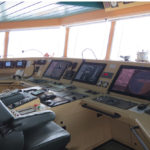In 2009 we have seen the steepest downturn in shipbuilding ever. The boom of the three previous years ended sooner[ds_preview] and much more abrupt than all of us had expected. It left the shipyards and the equipment manufacturers with huge order books and many ship owners with incredible financial obligations.
Now in the first half of 2010 the order books seem to have been restructured. Many contracts have been cancelled or significantly delayed. Others have been converted from one ship type to another and all kinds of financial engineering were applied. Significant losses have been realized by ship owners, shipyards, equipment manufacturers, investors and banks.
Everyone is aware that the fleet will further grow due to the remaining deliveries but signs of optimism can be seen as global trade is getting new momentum.
Nevertheless: in 2010 and in the first half of 2011 only very few orders for new ships are forecasted. Additionally there will be an extremely hard competition for the few orders. This will make it very difficult to achieve acceptable profits.
The low capacity utilisation of design offices, work planning and steel fabrication in our industry might create economic problems in 2011 and 2012. The market will recover then and we all need to be prepared. Most probably in 2015 we will know which companies managed to survive this crisis and what might be the structure of the shipbuilding in different areas.
The following slide gives an impression about the global distribution of our industry. Red is indicating countries with the facilities to deliver more than 500 newbuildings per year. Capacities for 100 to 500 deliveries per year are marked orange and below 100 yellow.
More than 80 % of the shipbuilding capacities are located in Asia. As of today approximately 40 % of the order book (number of ships) is with Chinese shipyards. South Korea and Japan are following with 23 % and 17 % (number wise) respectively. Europe as a whole participates with 10 %.
Especially China increased newbuilding capacities significantly in the last years. South Korea, Vietnam and India announced to do so, but have meanwhile stopped activities as demand plunged in the crisis. We can do all but hope that the Chinese industry will be wise enough to adjust capacities according to market demand.
The numbers in circles indicate the global ranking of the turnover of the equipment manufacturers by country. Germany could establish No 1 position recently ahead of Japan and followed by South Korea and China. Compared to the three competitors the vast majority of our products are exported.
This success has been supported by European ship owners and design offices who have introduced our products to the Asian shipyards and by the tremendous orders, which have been placed by European owners and investors. But it is more than obvious and proven by the development in Japan and South Korea that each country with shipbuilding facilities is building up its own equipment industry. It will be a major challenge to maintain high market shares under different circumstances in future.
What will be the main differences compared to the last years?
1. there is no real demand for more transportation capacity right now
2. international regulations will demand new concepts (e.g. emissions, ballast water)
3. the ship owners have a »gut feeling« that future vessels might be different
4. the shipping industry itself needs realignment after the boom
5. there will be only few investor driven large series of vessels
6. cost of operation will become more important
7. shipyards will diversify their technologies into marine infrastructure, renewable energies and sophisticated steel construction
To develop a better understanding of possible options in the future a group of well known German equipment manufacturers has recently held a so called Scenario Conference, organized by VDMA. By combining future-open, strategic and linked ideas, different and possible scenarios could be generated and different strategic approaches identified.
The headline was to try to look as far as 2021. Shipping must be considered as very conservative and chances took their time, always. The start was a personnel estimation of each participant and then an analysis of a system consisting of suppliers, shipbuilders / marine plant constructors, operators and the specific and general environment.
Defining, combining and investigating a high number of possible interactions in this system lead us after two days to a so called map of scenarios. Six scenarios were identified:
No. 1: Competition of innovations in a growing market
No. 2: Globally shrinking market
No. 3: Diversifying in a shrinking market
No. 4: Need for innovation and specialising forced by operators
No. 5: Offshore market gives opportunities to suppliers in a shrinking shipbuilding market
No. 6: Expanding offshore market leads to consolidated, integrated suppliers
It became evident that our global society will be extremely depended on transportation and energy, both under highest possible protection of the environment. Furthermore it is expected that future technological demands require bigger players and that equipment packages will be favoured. A lot of input and information was gained and each company has a base now to develop the own strategy.
The dominant and basic conclusion is: The central point for success is a product that is needed by the market and provided at the right time to the market. All other issues are less important.
Alexander Nürnberg



















